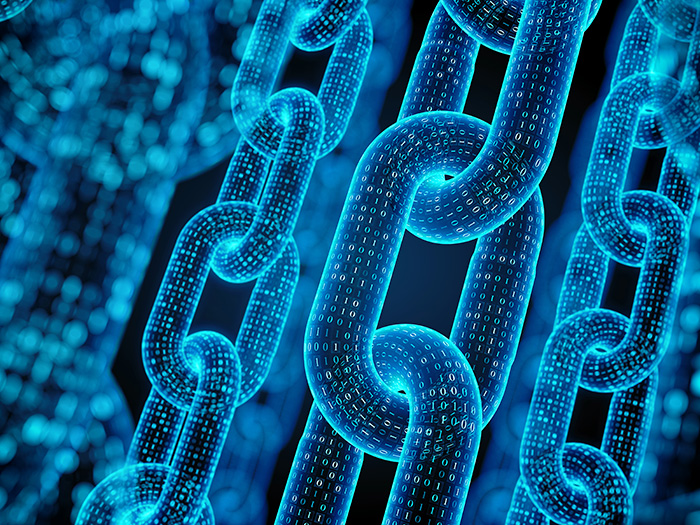OPPORTUNITY
Blockchain has huge implications for a wide range of applications. It points the digital economy towards a new generation of internet - The Internet of Value - where people can send information and exchange valuable digital assets like currencies, property titles and identity information, in a trustworthy way. Blockchain transactions can happen without the involvement of centralised transaction management structures, like banks, stock exchanges and government agencies. It can store transactional history in a transparent and secure way, so that the chances of fraud, hacking and interference are eliminated. The technology could therefore revolutionise business transactions.
TOPICS OF RELEVENCE
Blockchain holds enormous potential for several sectors, including:
- Insurance: Blockchain technology increases transparency and could assist insurance companies by improving risk estimations. Blockchain could also simplify operations by digitising and storing information on asset ownership. This could reduce the time to complete a transfer of insurance cover to new owners and make paper documentation superfluous.
- Utilities: Blockchain applications could transform the heavily regulated energy industry, by enabling both utilities and consumers to produce and sell electricity. Blockchain could record financial and operational transactions cheaply and reliably, without a central point of authority. It could also support secure, distributed power grids based on Internet of Things (IoT) networks. Smart home appliances, such as smart plugs or smart meters, could continuously search for the best offer.
- Supply Chain Management: Blockchain can track any transaction of a physical asset, as long as it is assigned a blockchain token. This means that the location and any transfer of ownership can be traced from origin to end in a verified, time-stamped and transparent way. A blockchain supply chain would increase trust between different parties along the chain, since it would open the supply chain to auditing and inspection. It is especially convenient for globalised supply chains, because funds can be transferred around the world without traditional bank involvement.
- Institutions and Governments: Institutions and government organisations could also benefit greatly from blockchain applications relating to electronic health records, government documents, voting systems and tax payments.
- Financial Services: The integration of blockchain technologies with GNSS and telecommunications satellites could enable currency transfers to bypass middlemen like banks and payment services. Blockchain could also become a platform for trading goods and services, through contractual obligations identified in smart contracts.
VALUE OF SPACE TO BLOCKCHAIN
The use of space data will be instrumental in the development of many blockchain applications and is fundamental for this Kick-start activity.

Global Navigation Satellite Systems (GNSS) are instrumental in applications that require certified geo-referencing and timestamping of transaction data. Possible examples include: geo- and time- tagged photographs used for insurance claim processing on damaged assets; timestamping of land title ownership transfer; and asset tracking and tracing for supply chain management. The European Galileo system offers a unique opportunity here, as its open and commercial services will bring essential advantages in terms of high precision and signal authentication.
Satellite Communications (Satcom) can play a key role in the development of blockchain applications in several ways:
a) Satellite communications can extend blockchain service coverage to users in geographical areas with limited or no terrestrial communication infrastructures.
b) They offer an alternative way to distribute new blocks and then to maintain a single unified ledger of transactions among all nodes, independently of their location. This increases robustness of the service, by guarding against possible failures in terrestrial connectivity.
Satellite communications could transfer blockchain data flows (e.g. transaction requests and acknowledgements, blockchain distribution), without any specific processing on-board. The introduction of cost-effective, low latency and wide coverage satcom mega-constellations, as well as 5G networks relying on terrestrial and satellite components, will reinforce the benefits of satcom. These systems will allow users to access the blockchain and pass transactions seamlessly and independently from their geographical position, in a cost-efficient and timely manner.
Satellite Earth Observation (EO) imagery will provide key information to diverse applications, helping to reinforce trust between the involved stakeholders (by providing evidence). It could also validate the conditions of execution of smart contracts. In the insurance sector, EO imagery could for instance be used to assess the damage from floods and fires and then to automatically trigger claims processing. For supply chain management, use of EO could include monitoring the volume of an oil tank, counting cars on large car parks, or providing information about the position and state of assets. For utility management, EO data could provide meteorological parameters relevant to renewable solar, wind, water and other energy production. This could improve predictions of production and enable operators to adapt upcoming transactions.
WHAT WE LOOK FOR
Kick-start Activities elaborate the business opportunity and the technical viability of new applications and services exploiting one or more space assets (e.g. Satellite Communications, Satellite Navigation, Earth Observation, Human Space Flight Technology). This call for Kick-start Activities is dedicated to the theme "Blockchain", which means that the call is open to companies which intend to develop applications making use of these immersive technologies in different industry sectors.
HOW TO APPLY
- Register by completing the online questionnaire on ESA-STAR Registration (minimum ‘light registration’ to see documents).
- Download the official tender documentation (Invitation to Tender) and create a ‘Bidder Restricted Area’ via EMITS Reference AO8872 from February 19th 2019.
- Write your proposal and obtain Letter of Support from National Delegation, if needed (see Authorisation of Funding section below).
- Submit your proposal via ESA-STAR Tendering by the 8th April 2019.
Currently Germany, Ireland and the UK have pre-approved funding for this Kick-start. All applications from companies and organizations residing in another ESA Member State will require a letter of approval from their national delegation.
AUTHORISATION OF FUNDING
Currently Germany, Ireland, Norway and the UK have pre-approved funding for this Kick-start. All applications from companies and organizations residing in another ESA Member State will require a letter of approval from their national delegation.



